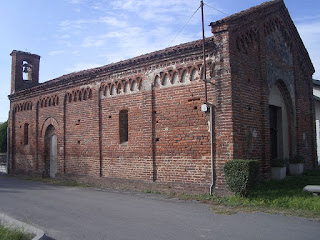Marco Zanuso - architect and designer
Innovative ideas put Italy at the forefront of contemporary style
Marco Zanuso, the architect and industrial designer whose innovative ideas helped revolutionize furniture and appliance design in Italy after the Second World War, was born in Milan on this day in 1916. Influenced by the Rationalist movement that emerged in the 1920s, he was one of the pioneers of the Modern movement, which brought contemporary styling to mass-produced consumer products. His use of sculptured shapes, bright colours, and modern synthetic materials helped make Italy a leader in furniture fashion. Italy had for many years been something of a trendsetter in interior design but during the post-War years, with the fall of Fascism and the rise of Socialism, there was a sense of liberation among Italian creative talents. With the recovery of the Italian economy there was a substantial growth in industrial production and mass-produced furniture. By the 1960s and 1970s, Italian interior design reached its pinnacle of stylishness. Zanuso was at the forefront, producing designs that used tubular steel, acrylics, latex foam, fibreglass, foam rubber, and injection-moulded plastics. Read more…
________________________________________________________________
Aurelio Milani - footballer
Centre forward helped Inter win first European Cup
Aurelio Milani, who helped Inter-Milan become the second Italian football club to win the European Cup, was born on this day in 1934 in Desio, about 25km (15 miles) north of Lombardy’s regional capital. Inter beat Real Madrid 3-1 in the final Vienna in 1964 to emulate the achievement of city rivals AC Milan, who had become the first European champions from Italy the previous year. Milani, a centre forward, scored the all-important second goal in the 61st minute after his fellow attacker Sandro Mazzola had given Inter the lead in the first half, receiving a pass from Mazzola before beating Real goalkeeper Vicente Train with a shot from outside the penalty area. Madrid, whose forward line was still led by the mighty Alfredo di Stefano with Ferenc Puskas playing at inside-left, pulled a goal back but Mazzola added a third for Inter. But this was the so-called Grande Inter side managed by the Argentinian master-tactician Helenio Herrera, who coached them to three Serie A titles in four years and retained the European Cup by defeating Eusebio’s Benfica 12 months later, when the final was played in their home stadium at San Siro in Milan. Read more…
________________________________________________________________
Battle of Agnadello
The day Venice lost most of its territory
Venetian forces were defeated by troops fighting on behalf of France, Spain and the Pope on this day in 1509 at Agnadello in Lombardy. As a result, the Republic of Venice was forced to withdraw from much of its territory on the mainland of Italy. The writer Niccolò Machiavelli later wrote in his book, The Prince, that in one day the Venetians had ‘lost what it had taken them 800 years of exertion to conquer.’ Louis XII of France, the Emperor Maximilian, Ferdinand II of Aragon and Pope Julius II had formed the League of Cambrai with the aim of dismantling the mainland empire of Venice as they all had their own claims to areas held by the Venetians. The French army left Milan on April 15 and invaded Venetian territory. Venice had organised a mercenary army near Bergamo commanded by the Orsini cousins, Bartolomeo d’Alviano and Niccolò di Pitigliano, who had been ordered to avoid direct confrontation with the advancing French but just to engage them in light skirmishes. By May 9 Louis had crossed the Adda river at Cassano d’Adda and the Orsini cousins decided to move south towards the River Po in search of better positions. Read more…
Home

























